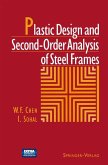When graduates leave college to enter the design office they will have at their disposal computer programs to suit particular projects. Nevertheless, they should have a basic understanding of how a structure should be loaded to achieve maximum design criteria otherwise their understanding and use of programs will be limited. Codes of practice classify loadings depending on the type and proposed use of a structure and offer guides as to how loads should be positioned. Influence line diagrams are, however, the best indicators for placing loads on a structure especially a continuous structure irrespective ofwhether the loads are moving, as in the case of bridges, or static. They also show clearly the effects of the self weight ofthe structure in the design process. It is important that the more general applications of influence line diagrams be recognised rather than restricting their use to moving loads only. They also define the parameters within which many codes have been drafted.
Bitte wählen Sie Ihr Anliegen aus.
Rechnungen
Retourenschein anfordern
Bestellstatus
Storno









